Abstract
Alkylphenols are widely used as plastic additives and surfactants. We report the identification of an alkylphenol, nonylphenol, as an estrogenic substance released from plastic centrifuge tubes. This compound was extracted with methanol, purified by flash chromatography and reverse-phase high performance liquid chromatography, and identified by gas chromatography-mass spectrometry. Nonylphenol induced both cell proliferation and progesterone receptor in human estrogen-sensitive MCF7 breast tumor cells. Nonylphenol also triggered mitotic activity in rat endometrium; this result confirms the reliability of the MCF7 cell proliferation bioassay. The estrogenic properties of alkylphenols, specifically nonylphenols, indicate that the use of plasticware containing these chemicals in experimental and diagnostic tests may lead to spurious results, and these compounds as well as alkylphenol polyethoxylates may also be potentially harmful to exposed humans and the environment at large.
Full text
PDF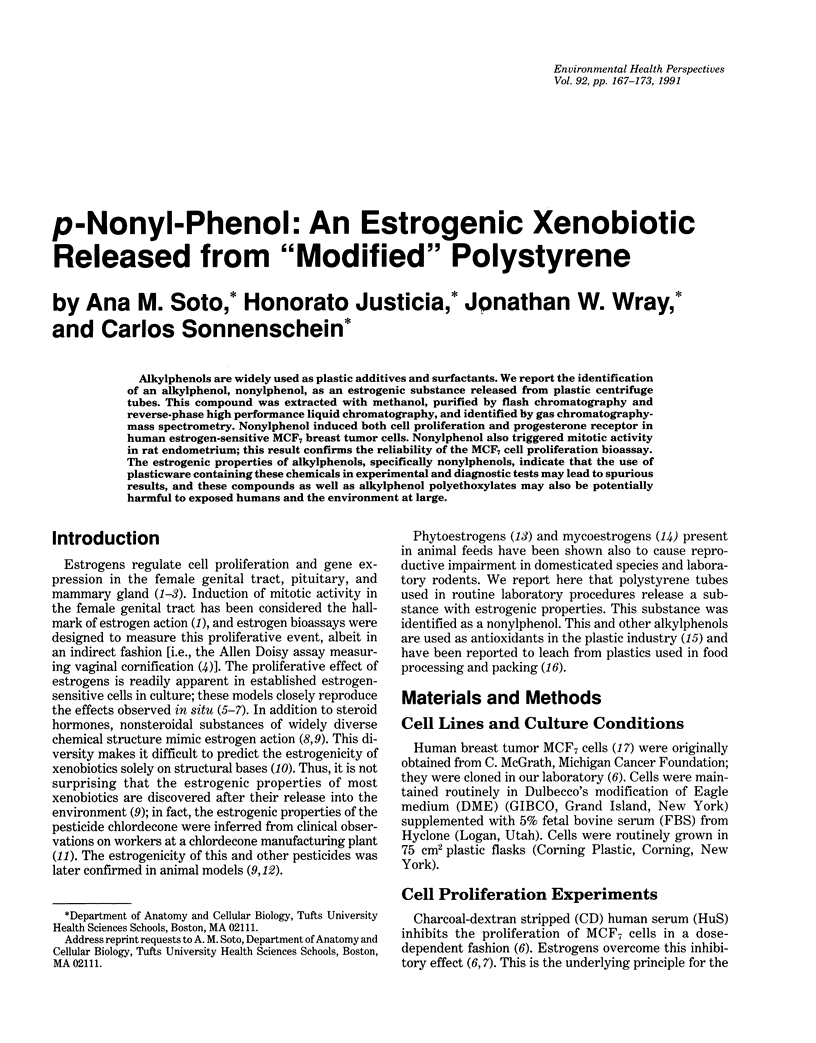
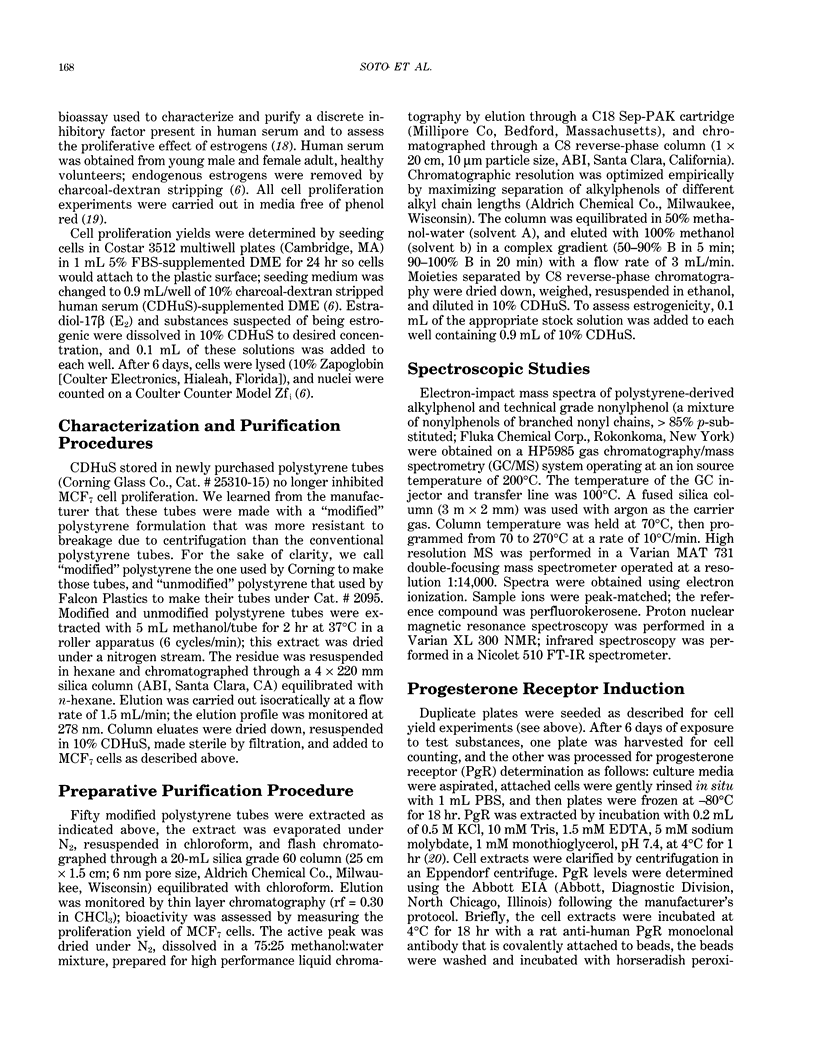
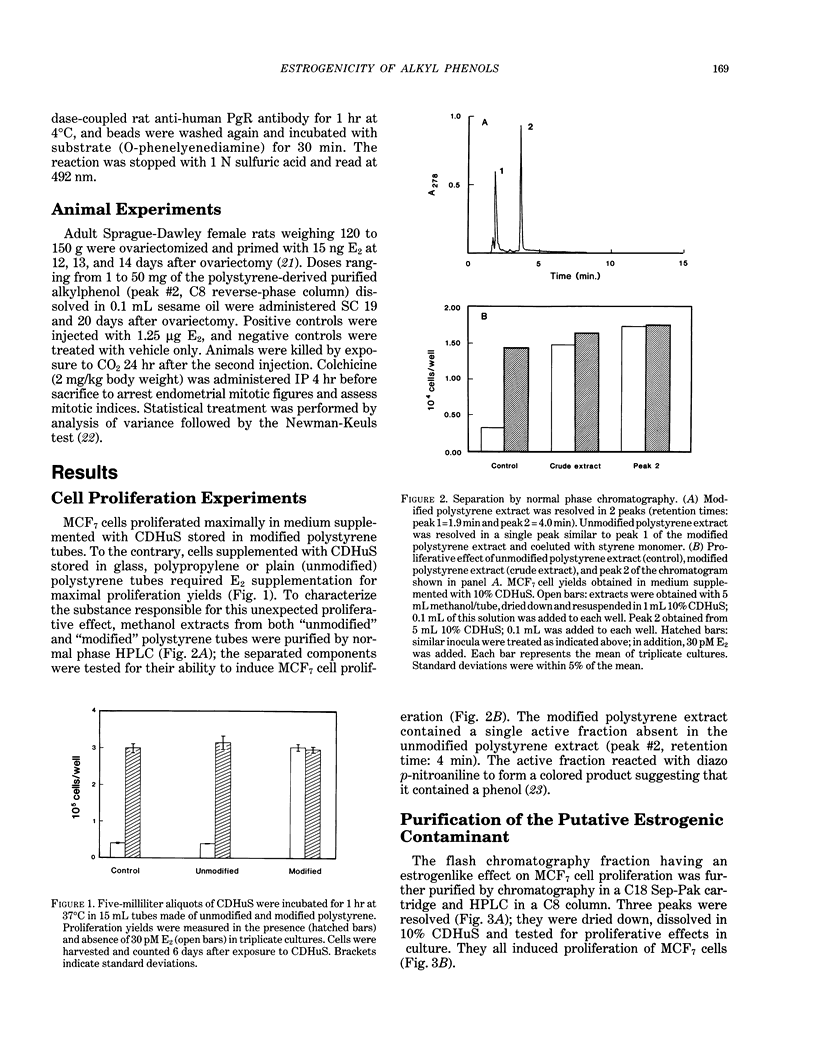
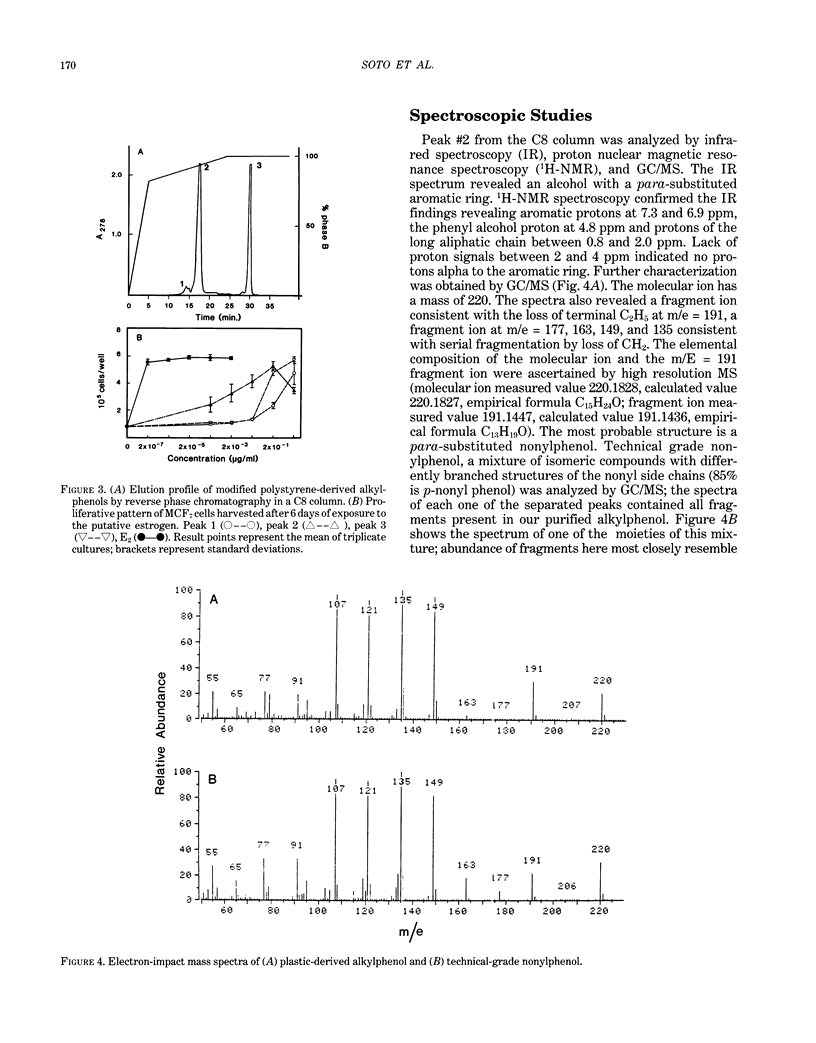

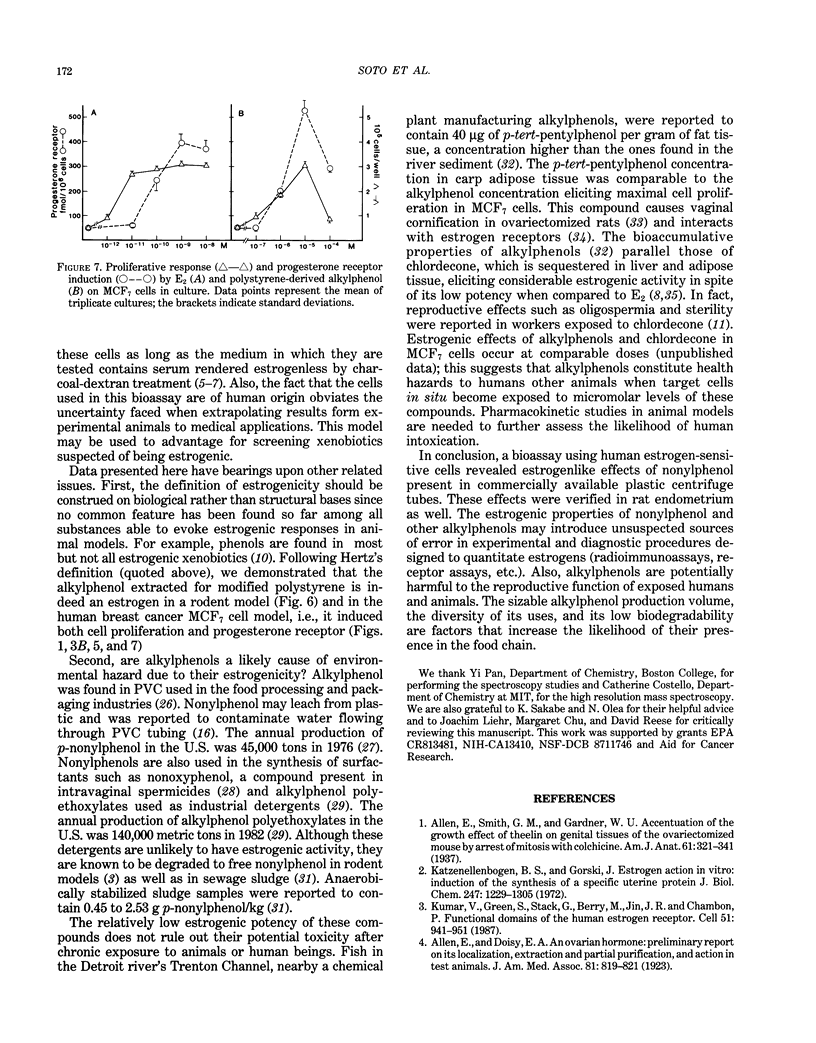
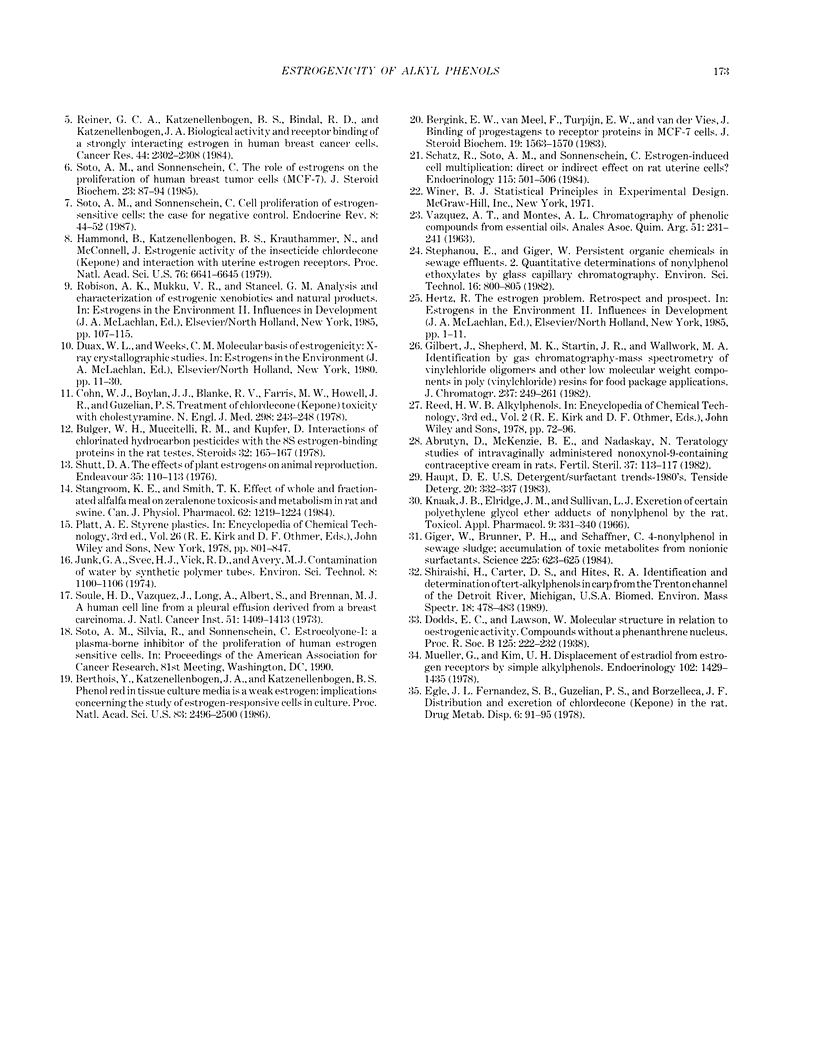
Selected References
These references are in PubMed. This may not be the complete list of references from this article.
- Abrutyn D., McKenzie B. E., Nadaskay N. Teratology study of intravaginally administered nonoxynol-9-containing contraceptive cream in rats. Fertil Steril. 1982 Jan;37(1):113–117. doi: 10.1016/s0015-0282(16)45988-1. [DOI] [PubMed] [Google Scholar]
- Bergink E. W., van Meel F., Turpijn E. W., van der Vies J. Binding of progestagens to receptor proteins in MCF-7 cells. J Steroid Biochem. 1983 Nov;19(5):1563–1570. doi: 10.1016/0022-4731(83)90371-0. [DOI] [PubMed] [Google Scholar]
- Bulger W. H., Muccitelli R. M., Kupfer D. Interactions of chlorinated hydrocarbon pesticides with the 8S estrogen-binding protein in rat testes. Steroids. 1978 Sep;32(2):165–177. doi: 10.1016/0039-128x(78)90003-x. [DOI] [PubMed] [Google Scholar]
- Cohn W. J., Boylan J. J., Blanke R. V., Fariss M. W., Howell J. R., Guzelian P. S. Treatment of chlordecone (Kepone) toxicity with cholestyramine. Results of a controlled clinical trial. N Engl J Med. 1978 Feb 2;298(5):243–248. doi: 10.1056/NEJM197802022980504. [DOI] [PubMed] [Google Scholar]
- Egle J. L., Fernandez J. B., Guzelian P. S., Borzelleca J. F. Distribution and excretion of chlordecone (Kepone) in the rat. Drug Metab Dispos. 1978 Jan-Feb;6(1):91–95. [PubMed] [Google Scholar]
- Giger W., Brunner P. H., Schaffner C. 4-Nonylphenol in sewage sludge: accumulation of toxic metabolites from nonionic surfactants. Science. 1984 Aug 10;225(4662):623–625. doi: 10.1126/science.6740328. [DOI] [PubMed] [Google Scholar]
- Hammond B., Katzenellenbogen B. S., Krauthammer N., McConnell J. Estrogenic activity of the insecticide chlordecone (Kepone) and interaction with uterine estrogen receptors. Proc Natl Acad Sci U S A. 1979 Dec;76(12):6641–6645. doi: 10.1073/pnas.76.12.6641. [DOI] [PMC free article] [PubMed] [Google Scholar]
- Katzenellenbogen B. S., Gorski J. Estrogen action in vitro. Induction of the synthesis of a specific uterine protein. J Biol Chem. 1972 Feb 25;247(4):1299–1305. [PubMed] [Google Scholar]
- Knaak J. B., Eldridge J. M., Sullivan L. J. Excretion of certain polyethylene glycol ether adducts of nonylphenol by the rat. Toxicol Appl Pharmacol. 1966 Sep;9(2):331–340. doi: 10.1016/0041-008x(66)90129-3. [DOI] [PubMed] [Google Scholar]
- Kumar V., Green S., Stack G., Berry M., Jin J. R., Chambon P. Functional domains of the human estrogen receptor. Cell. 1987 Dec 24;51(6):941–951. doi: 10.1016/0092-8674(87)90581-2. [DOI] [PubMed] [Google Scholar]
- Mueller G. C., Kim U. H. Displacement of estradiol from estrogen receptors by simple alkyl phenols. Endocrinology. 1978 May;102(5):1429–1435. doi: 10.1210/endo-102-5-1429. [DOI] [PubMed] [Google Scholar]
- Reiner G. C., Katzenellenbogen B. S., Bindal R. D., Katzenellenbogen J. A. Biological activity and receptor binding of a strongly interacting estrogen in human breast cancer cells. Cancer Res. 1984 Jun;44(6):2302–2308. [PubMed] [Google Scholar]
- Schatz R., Soto A. M., Sonnenschein C. Estrogen-induced cell multiplication: direct or indirect effect on rat uterine cells? Endocrinology. 1984 Aug;115(2):501–506. doi: 10.1210/endo-115-2-501. [DOI] [PubMed] [Google Scholar]
- Shiraishi H., Carter D. S., Hites R. A. Identification and determination of tert-alkylphenols in carp from the Trenton Channel of the Detroit River, Michigan, USA. Biomed Environ Mass Spectrom. 1989 Jul;18(7):478–483. doi: 10.1002/bms.1200180706. [DOI] [PubMed] [Google Scholar]
- Shutt D. A. The effects of plant oestrogens on animal reproduction. Endeavour. 1976 Sep;35(126):110–113. doi: 10.1016/0160-9327(76)90004-1. [DOI] [PubMed] [Google Scholar]
- Soto A. M., Sonnenschein C. Cell proliferation of estrogen-sensitive cells: the case for negative control. Endocr Rev. 1987 Feb;8(1):44–52. doi: 10.1210/edrv-8-1-44. [DOI] [PubMed] [Google Scholar]
- Soto A. M., Sonnenschein C. The role of estrogens on the proliferation of human breast tumor cells (MCF-7). J Steroid Biochem. 1985 Jul;23(1):87–94. doi: 10.1016/0022-4731(85)90265-1. [DOI] [PubMed] [Google Scholar]
- Soule H. D., Vazguez J., Long A., Albert S., Brennan M. A human cell line from a pleural effusion derived from a breast carcinoma. J Natl Cancer Inst. 1973 Nov;51(5):1409–1416. doi: 10.1093/jnci/51.5.1409. [DOI] [PubMed] [Google Scholar]
- Stangroom K. E., Smith T. K. Effect of whole and fractionated dietary alfalfa meal on zearalenone toxicosis and metabolism in rats and swine. Can J Physiol Pharmacol. 1984 Sep;62(9):1219–1224. doi: 10.1139/y84-203. [DOI] [PubMed] [Google Scholar]


